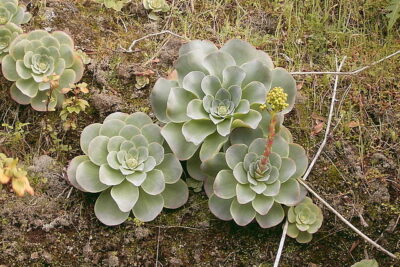
Growing Aloe Vera Indoors: Tips for Cultivating Succulent Houseplants
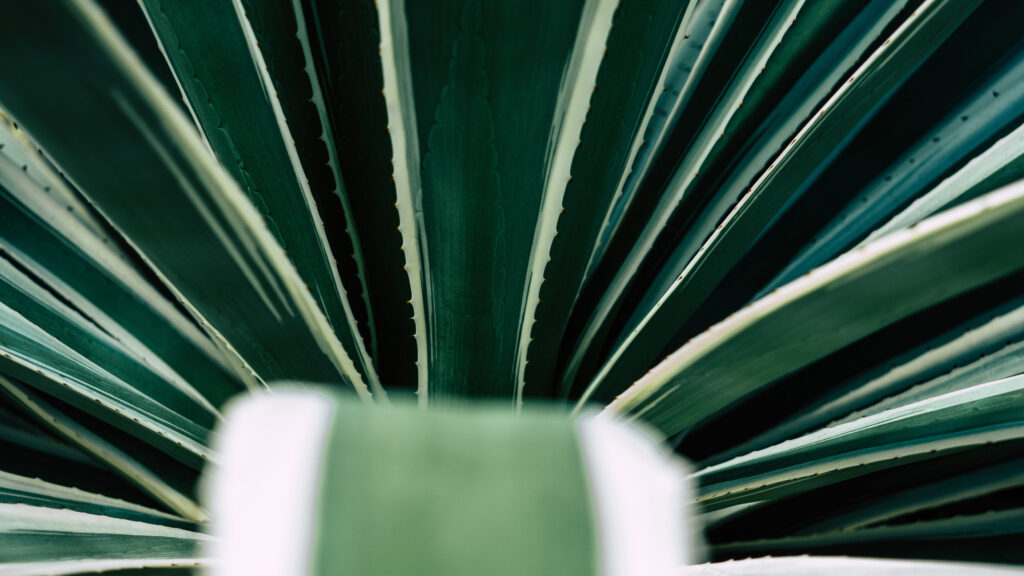
Aloe vera is a popular succulent plant known for its numerous health benefits and versatile uses. It is native to arid regions and is well-adapted to thrive in dry conditions, making it an excellent choice for indoor cultivation. Growing aloe vera indoors not only adds a touch of greenery to your living space but also allows you to enjoy the therapeutic properties of this incredible plant.
We will provide you with valuable tips and guidance on how to successfully grow aloe vera indoors. We will discuss the ideal growing conditions, including lighting, temperature, and soil requirements. Additionally, we will explore the proper watering and fertilizing techniques for maintaining healthy aloe vera plants. Furthermore, we will address common issues and pests that may arise during the cultivation process and provide effective solutions to ensure the well-being of your succulent houseplants. Whether you are a beginner or an experienced gardener, this article will equip you with the knowledge and tools to cultivate thriving aloe vera plants indoors.
- Choose a sunny location for your aloe vera plant
- Use well-draining soil to avoid root rot
- Water your aloe vera plant sparingly, allowing the soil to dry out between waterings
- Provide adequate air circulation to prevent the buildup of moisture and prevent diseases
- Fertilize your aloe vera plant with a balanced houseplant fertilizer during the growing season
- Trim off any dead or wilted leaves to promote healthy growth
- Repot your aloe vera plant every few years to refresh the soil and provide more room for growth
- Keep an eye out for pests such as mealybugs or scale insects and treat them promptly
- Harvest leaves as needed, but leave enough on the plant to sustain its growth
- Enjoy the beauty and benefits of your indoor aloe vera plant!
- Frequently Asked Questions
Choose a sunny location for your aloe vera plant
When it comes to growing aloe vera indoors, one of the most important factors to consider is the amount of sunlight the plant receives. Aloe vera plants thrive in bright, indirect light, so it's essential to choose a sunny location for them in your home.
Place your aloe vera plant near a south-facing window where it can get at least six hours of sunlight per day. If you don't have a suitable window, you can also use artificial grow lights to provide the necessary light for your aloe vera plant.
Provide well-draining soil for your aloe vera plant
Another crucial aspect of cultivating aloe vera indoors is ensuring the right type of soil for your plant. Aloe vera plants require well-draining soil to prevent root rot and other issues caused by excess moisture.
Use a succulent or cactus potting mix, or create your own by combining regular potting soil with sand or perlite to improve drainage. Avoid using heavy garden soil or potting mixes that retain too much moisture.
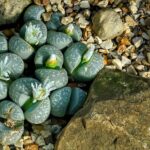 Can You Successfully Grow Lotus Lithops Succulents Indoors?
Can You Successfully Grow Lotus Lithops Succulents Indoors?Water your aloe vera plant sparingly
Aloe vera plants are succulents, meaning they store water in their leaves, making them drought-tolerant. Overwatering can be detrimental to their health, so it's crucial to water your aloe vera plant sparingly.
Allow the soil to dry out completely between waterings. Stick your finger into the soil about an inch deep – if it feels dry, it's time to water. Be sure to water the plant thoroughly, allowing the excess water to drain out of the pot.
Remember, it's better to underwater than overwater your aloe vera plant. Too much water can lead to root rot and other diseases.
Fertilize your aloe vera plant occasionally
While aloe vera plants can survive without regular fertilization, providing them with nutrients can help them thrive and grow more vigorously.
Use a balanced, water-soluble fertilizer specifically formulated for succulents or cacti. Follow the instructions on the fertilizer packaging, and apply it to your aloe vera plant during the growing season, typically in spring and summer.
Be cautious not to over-fertilize, as this can result in the burning of the plant's roots. Always dilute the fertilizer to half the recommended strength and apply it when the soil is already moist.
Monitor for pests and diseases
Like any houseplant, aloe vera plants can be susceptible to pests and diseases. Keep an eye out for common pests such as mealybugs, scales, and aphids.
 Can You Keep Succulents Indoors Year-Round?
Can You Keep Succulents Indoors Year-Round?If you notice any signs of infestation, gently wipe the affected areas with a cotton swab dipped in rubbing alcohol. For severe infestations, you may need to use an organic insecticidal soap or consult a professional.
In addition, watch for signs of diseases like root rot or leaf spot. These issues are often caused by overwatering or poor drainage. If detected early, you may be able to save your aloe vera plant by adjusting its watering schedule or repotting it with fresh, well-draining soil.
By following these tips, you can successfully cultivate a thriving aloe vera plant indoors. With its low-maintenance nature and numerous benefits, your aloe vera plant will not only enhance the aesthetic appeal of your home but also provide you with its healing properties.
Use well-draining soil to avoid root rot
When growing Aloe Vera indoors, one of the most important factors to consider is the type of soil you use. Aloe Vera plants are succulents and, like most succulents, they thrive in well-draining soil. This is because Aloe Vera plants store water in their leaves, and excess moisture in the soil can lead to root rot and other issues.
To ensure proper drainage, it is recommended to use a special succulent or cactus mix. These types of soil are specifically formulated to provide the ideal balance of moisture retention and drainage for succulent plants. You can find these mixes at your local garden center or purchase them online.
When potting your Aloe Vera plant, make sure to choose a pot with drainage holes at the bottom. This will allow excess water to escape and prevent waterlogged soil. If you already have a pot without drainage holes that you'd like to use, you can create a layer of pebbles or stones at the bottom to improve drainage.
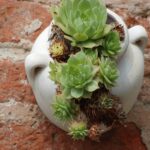 Indoor vs Outdoor: Ideal Growing Environments for Succulents
Indoor vs Outdoor: Ideal Growing Environments for SucculentsRemember to avoid using regular potting soil or garden soil, as these tend to retain too much moisture and can lead to root rot. A well-draining soil will not only help prevent root rot but also promote healthy root development and overall growth of your Aloe Vera plant.
Key Points:
- Choose a well-draining soil specifically formulated for succulents or cacti.
- Use a pot with drainage holes to allow excess water to escape.
- Avoid using regular potting or garden soil.
By following these tips and using well-draining soil, you can ensure that your Aloe Vera plant thrives indoors, free from the risks of root rot.
Water your aloe vera plant sparingly, allowing the soil to dry out between waterings
One of the most popular and easy-to-care-for houseplants is the aloe vera plant. Known for its numerous health benefits and gel-filled leaves, aloe vera is not only a great addition to any indoor space but also a useful plant to have around. Cultivating aloe vera indoors is relatively simple, and with a little care and attention, you can enjoy the beauty and benefits of this succulent houseplant.
1. Choose the Right Pot and Soil
When growing aloe vera indoors, it's essential to select the right pot and soil. Aloe vera prefers a well-draining potting mix, so make sure to choose a pot with drainage holes to prevent overwatering. Additionally, use a cactus or succulent-specific soil mix that provides excellent drainage and aeration for the roots.
2. Place in a Bright Location
Aloe vera plants thrive in bright, indirect light. Find a spot near a window that receives plenty of sunlight throughout the day. However, be cautious of placing the plant in direct sunlight, as it can lead to sunburn or scorch the leaves.
3. Water Sparingly
One of the most crucial aspects of caring for aloe vera plants is watering them properly. These succulents are native to arid regions and have adapted to survive in dry conditions. Water your aloe vera sparingly, allowing the soil to dry out between waterings. Overwatering can lead to root rot and other issues.
 Optimal Indoor Lighting for Succulents: Sunlight or Not?
Optimal Indoor Lighting for Succulents: Sunlight or Not?4. Maintain Adequate Humidity
Aloe vera plants prefer low humidity levels, making them suitable for indoor environments. Avoid placing the plant in areas with high humidity, such as bathrooms or kitchens. If you live in a particularly dry climate, consider using a humidifier to maintain the optimal humidity levels for your aloe vera.
5. Fertilize Occasionally
While aloe vera plants do not require frequent fertilization, providing them with nutrients can promote healthy growth. Use a balanced, water-soluble fertilizer specifically designed for succulents or cacti. Apply the fertilizer sparingly, following the instructions on the package, and only during the plant's active growing season.
6. Prune and Propagate
Pruning aloe vera plants can help maintain their shape and prevent them from becoming leggy. If you notice any damaged or dead leaves, trim them off close to the base of the plant. Additionally, aloe vera plants are easy to propagate. Simply remove offsets or "pups" that grow around the base of the plant and replant them in a separate pot.
7. Watch Out for Pests
Aloe vera plants are relatively resistant to pests, but they can still fall victim to common houseplant pests like mealybugs and spider mites. Regularly inspect your plant for any signs of infestation, such as webbing or tiny white insects. If you notice any pests, treat them promptly with organic insecticidal soap or neem oil.
By following these tips, you can successfully grow aloe vera plants indoors and enjoy their beauty, health benefits, and air-purifying qualities. With a little love and care, your aloe vera will thrive, adding a touch of green to your home or office space.
Provide adequate air circulation to prevent the buildup of moisture and prevent diseases
When growing aloe vera indoors, it is essential to provide adequate air circulation to prevent the buildup of moisture and prevent diseases. Aloe vera plants thrive in dry conditions, and stagnant air can lead to the development of mold, rot, and other harmful diseases.
To ensure proper air circulation, place your aloe vera plant in a well-ventilated area of your home. Avoid placing it in rooms with high humidity, such as bathrooms or laundry rooms. Instead, opt for areas with good air circulation, like near a window or in a living room with regular airflow.
 Can Succulents Thrive Indoors Without Sunlight?
Can Succulents Thrive Indoors Without Sunlight?You can also use a fan to improve air circulation around your aloe vera plant. Set the fan to a low or medium speed and direct it towards the plant, ensuring that the air reaches all sides of the plant. This will help prevent the buildup of excess moisture and create a healthier environment for your succulent houseplant.
Remember to keep the leaves of your aloe vera plant dry as well. Water droplets that remain on the leaves for extended periods can create a breeding ground for bacteria and fungi. If you accidentally water the leaves, gently pat them dry with a clean cloth or tissue.
By providing adequate air circulation, you can ensure the longevity and overall health of your indoor aloe vera plant. A well-ventilated environment will prevent the buildup of moisture, reducing the risk of diseases and promoting the growth of robust and vibrant succulent houseplants.
Fertilize your aloe vera plant with a balanced houseplant fertilizer during the growing season
When it comes to growing aloe vera indoors, one key aspect to keep in mind is fertilization. Providing your aloe vera plant with the right nutrients is crucial for its healthy growth and development. During the growing season, it is recommended to fertilize your aloe vera plant with a balanced houseplant fertilizer.
A balanced houseplant fertilizer contains a mix of essential nutrients that will promote overall plant health. Look for a fertilizer that has an equal ratio of nitrogen (N), phosphorus (P), and potassium (K), such as a 10-10-10 or 20-20-20 formula. This well-balanced combination will provide your aloe vera plant with the necessary nutrients to thrive.
Before applying fertilizer to your aloe vera plant, make sure the soil is moist. This will help prevent any potential fertilizer burn. Follow the instructions on the fertilizer packaging for the correct dosage and application method. In general, it is advisable to dilute the fertilizer with water to avoid over-fertilization.
During the growing season, which typically occurs in spring and summer, fertilize your aloe vera plant once a month. This regular feeding will provide the plant with a continuous supply of nutrients, supporting its growth and vitality. However, avoid fertilizing your aloe vera plant during the dormant season, which typically occurs in fall and winter. During this time, the plant's growth slows down, and it requires less nutrients.
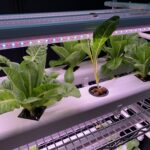 Can Succulents Flourish with Grow Lights?
Can Succulents Flourish with Grow Lights?It's important to note that while fertilizing is beneficial for aloe vera plants, it's crucial not to overdo it. Over-fertilization can lead to salt build-up in the soil, causing root damage and negatively impacting the plant's health. Always monitor your plant's response to the fertilizer and adjust the frequency and dosage accordingly.
By fertilizing your aloe vera plant with a balanced houseplant fertilizer during the growing season, you will be providing it with the necessary nutrients to thrive and flourish. Remember to follow the proper dosage and application instructions and monitor your plant's response. With the right care and attention, you can enjoy the beauty and benefits of growing aloe vera indoors.
Trim off any dead or wilted leaves to promote healthy growth
When growing aloe vera indoors, it is important to regularly trim off any dead or wilted leaves. This not only improves the overall appearance of the plant, but it also promotes healthy growth. Dead or yellowing leaves can be a sign of overwatering, lack of sunlight, or other issues. By removing these leaves, you allow the plant to focus its energy on producing new, vibrant foliage.
Choose the right pot and soil
Choosing the right pot and soil is crucial for successfully growing aloe vera indoors. Opt for a pot with drainage holes to prevent waterlogging, as aloe vera plants are susceptible to root rot. Additionally, use a well-draining potting mix specifically designed for succulents. This ensures proper moisture retention while allowing excess water to drain away.
Provide ample sunlight
Aloe vera plants thrive in bright, indirect sunlight. Place your plant near a window that receives plenty of natural light, preferably facing south or west. If your indoor space lacks sufficient sunlight, consider using artificial grow lights to supplement the plant's light requirements. However, be cautious not to expose the plant to direct sunlight for extended periods, as it can lead to sunburn and damage the leaves.
Water sparingly
Aloe vera is a drought-tolerant succulent, so it is important not to overwater it. Allow the soil to dry out completely between waterings, and then water the plant thoroughly, ensuring the water reaches the roots. Be mindful not to let the plant sit in standing water, as this can cause root rot. During winter months, when the plant goes dormant, reduce watering frequency even further.
 Can Mother of Thousands Succulents Thrive Indoors?
Can Mother of Thousands Succulents Thrive Indoors?Fertilize occasionally
Aloe vera plants do not require frequent fertilization, but a light feeding every few months can help promote healthy growth. Use a balanced, water-soluble fertilizer specifically formulated for succulents, following the instructions on the packaging. Remember not to over-fertilize, as this can lead to salt buildup in the soil and damage the plant.
- Trim off dead or wilted leaves regularly
- Choose a pot with drainage holes and well-draining soil
- Provide bright, indirect sunlight or supplement with grow lights
- Water sparingly, allowing the soil to dry out completely between waterings
- Fertilize occasionally with a balanced, water-soluble fertilizer
By following these tips, you can successfully cultivate a thriving aloe vera plant indoors. Enjoy the beauty of this versatile succulent while reaping its numerous health benefits!
Repot your aloe vera plant every few years to refresh the soil and provide more room for growth
One important aspect of growing aloe vera indoors is to regularly repot your plant. Over time, the soil in the pot can become compacted and depleted of nutrients, hindering the plant's growth. By repotting your aloe vera every few years, you can provide it with fresh soil and create more space for its roots to expand.
When choosing a new pot for repotting, opt for a container that is slightly larger than the current one. This will allow the plant to have enough room to grow without being overwhelmed by excessive space. Additionally, make sure the new pot has drainage holes to prevent waterlogging, as aloe vera plants are susceptible to root rot.
Before repotting, gently remove the aloe vera plant from its current pot. Be careful not to damage the roots in the process. Once the plant is out, carefully shake off any excess soil from the roots. This will help you assess their health and identify any signs of overgrowth or disease.
Next, prepare the new pot by adding a layer of well-draining potting mix at the bottom. This will improve drainage and prevent water from sitting at the bottom of the pot. Then, place the aloe vera plant in the center of the pot, making sure its base is slightly above the rim of the container.
 Growing Succulents on Trees: A Unique Outdoor Garden Idea
Growing Succulents on Trees: A Unique Outdoor Garden IdeaFill the remaining space around the plant with fresh potting mix, gently pressing it down to secure the plant in place. Avoid compacting the soil too much, as this can hinder water drainage and air circulation. Once repotted, water the plant thoroughly to settle the soil and encourage root establishment.
Remember, aloe vera plants prefer slightly dry conditions, so be cautious not to overwater them after repotting. Allow the soil to dry out between waterings, and avoid leaving the plant sitting in standing water.
By repotting your aloe vera plant every few years, you provide it with the necessary nutrients and space to thrive. This simple maintenance task will ensure your succulent houseplant continues to grow strong and healthy.
Keep an eye out for pests such as mealybugs or scale insects and treat them promptly
Aloe vera plants are generally hardy and resistant to pests. However, like any other houseplant, they can occasionally attract unwanted visitors such as mealybugs or scale insects. It's important to keep an eye out for these pests and take immediate action to prevent them from spreading and causing damage to your aloe vera plant.
Mealybugs are small, soft-bodied insects that appear as white, cottony masses on the leaves and stems of the plant. They feed on the sap, causing the plant to weaken and develop a yellowish appearance. Scale insects, on the other hand, are small, oval-shaped pests that attach themselves to the plant and suck out the sap, resulting in stunted growth and yellowing leaves.
If you notice any signs of infestation, it's crucial to act promptly to prevent further damage. Here are a few steps you can take to treat mealybugs or scale insects on your aloe vera plant:
 Easy Tips for Indoor Succulent Care: A Guide to Succulent Success!
Easy Tips for Indoor Succulent Care: A Guide to Succulent Success!- Isolate the affected plant: Remove the infested plant from other plants to prevent the pests from spreading.
- Inspect the plant: Carefully examine the leaves, stems, and soil for signs of pests. Look for cotton-like masses or small, oval-shaped bumps.
- Manual removal: Use a cotton swab dipped in rubbing alcohol to gently wipe off the pests from the plant. Be sure to get into all the nooks and crannies where they may be hiding.
- Natural remedies: You can also try using natural remedies such as neem oil or insecticidal soap to control the infestation. Follow the instructions on the product label for application.
- Monitor and repeat: Keep a close eye on the plant after treatment and repeat the process if necessary. It's important to be persistent in eliminating the pests completely.
Remember to always check the underside of leaves and other hidden areas, as pests often hide in these spots. Regularly inspecting your aloe vera plant will help you catch any infestations early on and ensure the health and vitality of your succulent houseplant.
Harvest leaves as needed, but leave enough on the plant to sustain its growth
When it comes to growing aloe vera indoors, one important tip to keep in mind is to harvest leaves as needed. Aloe vera leaves contain a gel-like substance that is widely used for its medicinal properties. However, it's crucial to leave enough leaves on the plant to sustain its growth.
Aloe vera plants need their leaves to produce energy through photosynthesis. By removing too many leaves at once, you risk hampering the plant's ability to grow and thrive. Instead, only harvest mature leaves that are at least 8-10 inches long.
When harvesting a leaf, use a sharp knife or scissors to cut it as close to the base of the plant as possible. It's important to cut the leaf at an angle to prevent water from collecting on the cut surface, which can lead to rotting.
Once you have harvested a leaf, you can either use the gel immediately or store it for future use. To store the gel, place it in an airtight container and keep it in the refrigerator. Make sure to label the container with the date to ensure you use it within a reasonable time frame.
Remember, aloe vera is a resilient plant, but it's essential to practice responsible harvesting to ensure its continued growth and well-being.
 Can Succulents Survive Outdoors All Year?
Can Succulents Survive Outdoors All Year?Enjoy the beauty and benefits of your indoor aloe vera plant!
Growing aloe vera indoors is a wonderful way to add some greenery to your home while also reaping the numerous health benefits this versatile succulent has to offer. Not only does aloe vera make for an attractive houseplant, but it also has medicinal properties that can be useful in treating various skin conditions and promoting overall well-being.
If you're new to cultivating succulent houseplants or just want some tips to help your aloe vera thrive, you've come to the right place. Read on to discover some essential guidelines for growing aloe vera indoors.
1. Choosing the Right Location
Aloe vera plants thrive in bright, indirect sunlight. Place your aloe vera pot near a south-facing window, but be sure to protect it from intense midday sun, as this can scorch the leaves. If you don't have a suitable window, you can also use artificial grow lights to provide the necessary light for your plant.
2. Providing Adequate Drainage
Aloe vera plants prefer well-draining soil to prevent waterlogging, which can lead to root rot. Use a cactus or succulent potting mix that provides excellent drainage. Additionally, make sure the pot you choose has drainage holes at the bottom to allow excess water to escape.
3. Watering the Right Way
While aloe vera is a drought-tolerant plant, it still requires regular watering. The key is to water deeply but infrequently. Allow the top inch of soil to dry out completely before watering again. Overwatering can be detrimental to your aloe vera, so it's important to strike the right balance.
4. Fertilizing Sparingly
Aloe vera plants don't require frequent fertilization. Use a balanced, water-soluble fertilizer specifically formulated for succulents. Apply the fertilizer sparingly during the growing season, typically from spring to fall, and avoid fertilizing during the dormant winter months.
5. Propagating Aloe Vera
If you want to expand your collection of aloe vera plants or share them with friends, propagating them is a simple and rewarding process. You can propagate aloe vera through offsets, which are baby plants that grow alongside the main plant. Gently remove the offset and plant it in a separate pot with well-draining soil.
6. Pruning and Maintenance
Pruning aloe vera is not typically necessary, but you can remove any damaged or yellowing leaves with a clean, sharp knife or scissors. Regularly inspect your plant for signs of pests or diseases, such as mealybugs or root rot, and take appropriate action if needed.
Remember: Aloe vera is not only a beautiful addition to your indoor space but also a valuable plant with various uses. From soothing sunburns to purifying the air, growing aloe vera indoors can bring both aesthetic and health benefits.
Follow these tips and enjoy the satisfaction of successfully growing and caring for your own indoor aloe vera plant!
Frequently Asked Questions
1. Can Aloe Vera be grown indoors?
Yes, Aloe Vera can be grown indoors as it adapts well to indoor conditions and is a popular choice for houseplants.
2. What are the ideal growing conditions for Aloe Vera indoors?
Aloe Vera thrives in bright, indirect sunlight and prefers temperatures between 55-80°F (13-27°C). It also requires well-draining soil and infrequent watering.
3. How often should I water my indoor Aloe Vera plant?
Aloe Vera plants should be watered deeply but infrequently. Watering once every 2-3 weeks is usually sufficient, allowing the soil to dry out between waterings.
4. Can I use Aloe Vera grown indoors for medicinal purposes?
Yes, Aloe Vera grown indoors can be used for its medicinal properties. The gel inside the leaves can be applied topically to soothe burns, cuts, and skin irritations.
If you want to read more articles similar to Growing Aloe Vera Indoors: Tips for Cultivating Succulent Houseplants, you can visit the Indoor and Outdoor Care category.






You Must Read